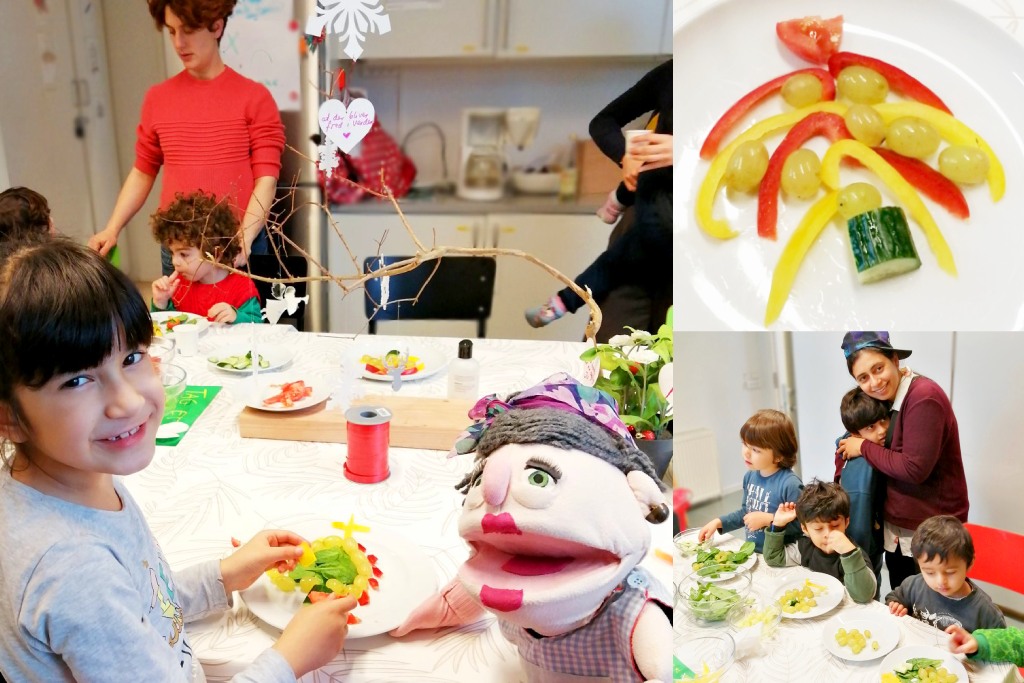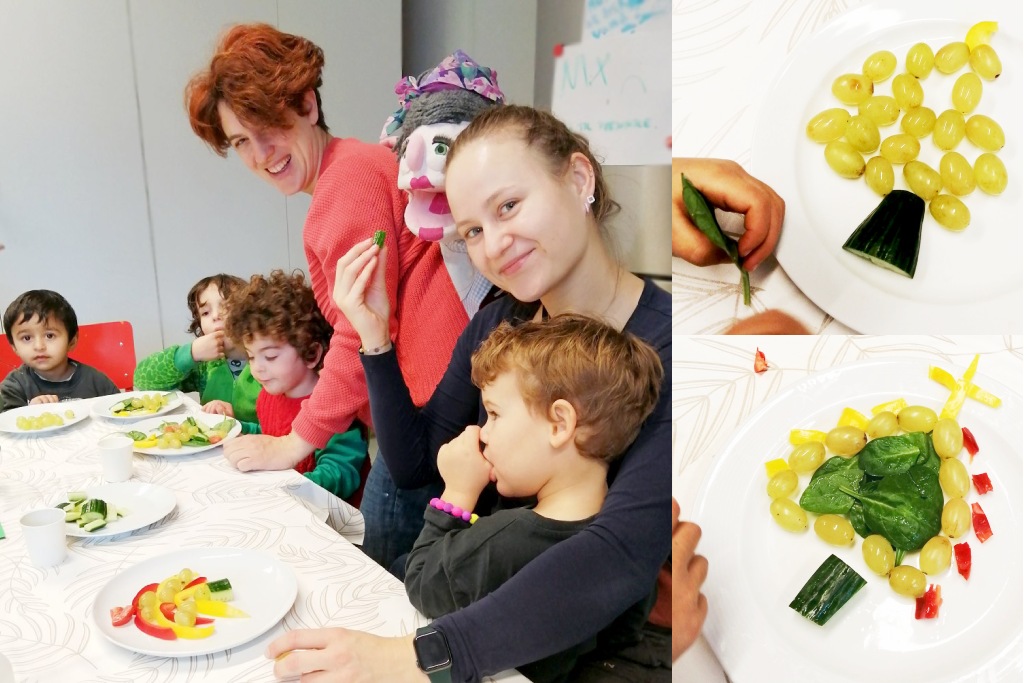workshop funky edible Christmas trees from fruit and veggie scraps

🎄🍇🍅Grandma Sita had a lot of fun creating and eating Christmas trees made from fruit and veggies with the kids and parents of Forældrenes Børneklub in Copenhagen, DK.
🌱🥦🍎 Grandma Sita’s way of encouraging our little ones to eat more raw fruit and veggies full of vitamins is a fun Holiday activity for kids at home. Win-win!
🛒 Every cooking workshop, Grandma Sita inspires action by utilizing as much food rescue as possible to minimize food waste in Denmark. Think global, act local!
🤗 All children were welcome with their parents or adult companions (usually family members), generating a space for intergenerational cooking.
🌍 It is becoming more popular to incorporate plant-based meals into festive celebrations around the world. Happy sustainable holidays everyone!
➡️ Forældrenes Børneklub is family-based association in Nordvest, Copenhagen. Volunteers are parents with children aged 0-6, who plan & organize all activities. + info 👉https://www.facebook.com/foraeldrenesboerneklub

👵💚 Grandma tip:
*Get creative and build your tree out of books, wood, paper, or whatever else you can think of, even edible ones like ours.
*For more tips & tricks for a more sustainable festive season, read about 👉 Grandma Sita’s advice on wrapping presents, homemade gifts, and Christmas tree alternatives.
😱📢 A 2-meter-high artificial Christmas tree made from plastic has a carbon footprint of around 40kg of CO2.
📗 Modern Christmas trees originated during the Renaissance in early modern Germany. Its 16th-century origins are sometimes associated with Protestant Christian reformer Martin Luther, who is said to have first added lighted candles to an evergreen tree. The Christmas tree was first recorded as being used by German Lutherans in the 16th century, with records indicating that a Christmas tree was placed in the Cathedral of Strasbourg in 1539. / Source: Wikipedia
